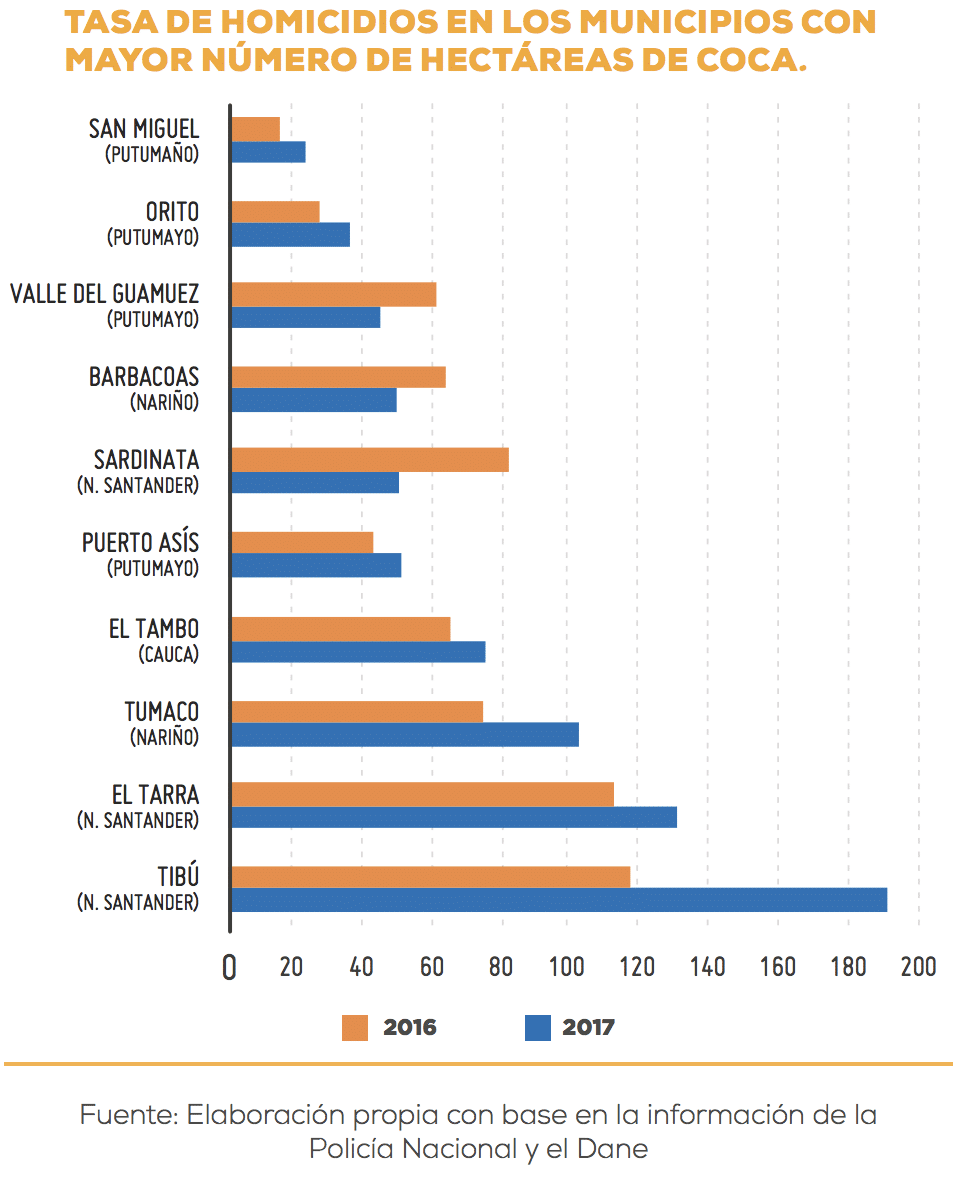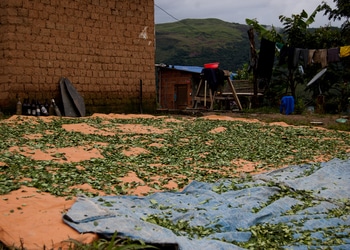A new report says that homicide rates increased substantially between 2016 and 2017 in municipalities in Colombia partaking in coca crop substitution programs, highlighting the fragility of the program in the context of intensified conflict among the country’s fragmented crime groups.
Homicide rates in municipalities where coca crop substitution programs were implemented increased by 33 percent between 2016 and 2017, according to a new report from Colombia’s Ideas for Peace Foundation (Fundación Ideas para la Paz – FIP).
There are an estimated 107,000 to 180,000 families involved in coca cultivation across 183 municipalities in Colombia. Throughout 2017, the report found that authorities initiated agreements with families in 36 municipalities as part of the national crop substitution program, which offers financial incentives to coca growers who substitute their crops for legal alternatives.
SEE ALSO: Colombia News and Profiles
The municipalities where substitution programs were initiated saw the largest increase in homicide rates between 2016 and 2017. The report found that homicide rates in these areas climbed from 41.1 per 100,000 inhabitants to 54.7 in 2017. Homicide rates in municipalities with coca crops but without the program also increased, from 35.5 per 100,000 inhabitants to 39.5 in 2017. Municipalities without coca crops, however, saw a decrease in homicide rates between 2016 and 2017.

(Graphics courtesy of FIP showing homicides reate in groups of municipalities)
The report noted that the majority of municipalities with high levels of violence were impacted by disputes between criminal groups. For example, the report links high levels of violence in the western coastal department of Chocó to fighting between the Urabeños and the National Liberation Army (Ejército de Liberación Nacional – ELN).
Additionally, the report found that the Colombian government’s slow progress on implementing various components of the crop substitution program is jeoporadizing the success of the effort as families that initially agreed to voluntarily eradicate illicit crops consider reverting back to replanting coca.
According to FIP, only 53 percent of families participating in the program had received financial subsidies as of December 2017, while the remaining 47 percent is still in the validation process. Authorities said that 100 percent of families would be reached in the first three months of 2018, according to the report.
InSight Crime Analysis
The new FIP report suggests that Colombia’s coca crop substitution program continues to face some of the same obstacles that the organization identified in a previous report.
Pressure from armed criminal organizations on coca growers and fighting between these groups continues to be a primary factor challenging coca crop substitution. Homicide rates in some of areas producing the most coca, such as Norte de Santander and Nariño, are well over 100 murders per 100,000 inhabitants. The report states that these are also the areas where coca crop substitution has advanced the least.*

(Graphic courtesy of FIP showing homicide rates in specific municipalities.)
Indeed, ELN guerrillas carried out a spate of attacks recently in the key port city of Tumaco in Nariño and in Norte de Santander, among other places, in an effort to strengthen their presence in some of Colombia’s most criminally strategic areas. And dissidents from the now-demobilized Revolutionary Armed Forces of Colombia (Fuerzas Armadas Revolucionarias de Colombia – FARC) have also continued with attacks in key regions to try and solidify their role in the drug trade.
SEE ALSO: Coverage of Ex-FARC Mafia
The rising violence poses significant logistical and security problems for members of the United Nations Office on Drugs and Crime (UNODC) who are responsible for verifying that coca growers participating in the crop substitution program have in fact eradicated their crops. According to the report, this has generated tensions between UNODC members and coca growing families, ultimately undermining the success of the coca crop substitution program.
The new dynamics of Colombia’s criminal violence are not only threatening the government’s coca crop substitution program, they are also displacing thousands of people across the country. In the Bajo Caucá subregion of Antioquia, fighting between the Urabeños and the ELN recently forced more than 1,000 individuals to flee the area. According to a December 2017 report from the United Nations’ Office for the Coordination of Humanitarian Affairs (OCHA), mass displacements as a result of conflict between armed criminal groups increased by 53 percent between 2016 and 2017, while attacks on civilians by criminal groups increased by 27 percent.
*This article was updated from its original version to clarify the link between homicides and the advancement of the coca crop substitution program.

